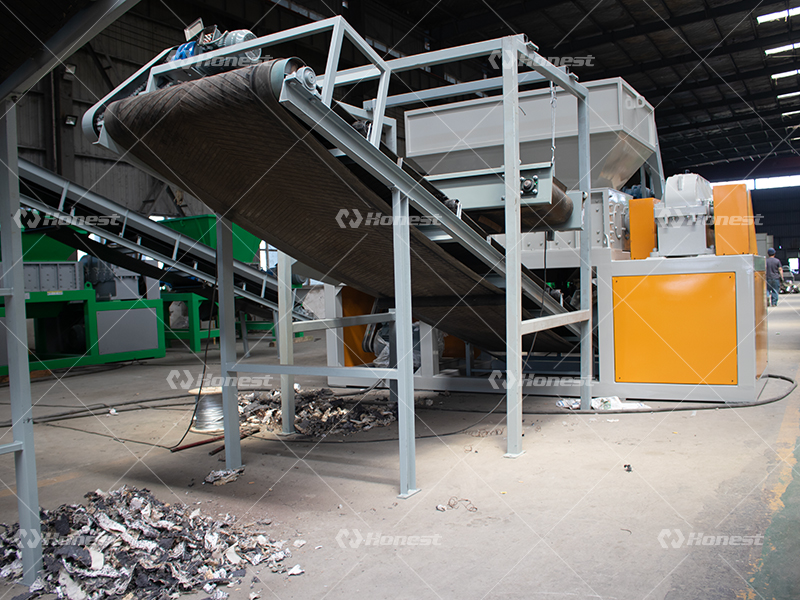The industrial fabric shredder machine for textile recycling is an essential piece of equipment in modern waste management and material recovery systems. With the growing use of various industrial textiles in manufacturing, construction, and consumer products, fabric waste has become a major environmental concern. Shredding and recycling industrial fabric not only reduce landfill waste but also create valuable secondary materials for reuse.

Types of Industrial Fabric
Industrial fabrics include a wide range of materials used for functional and technical applications rather than apparel. Common types are:
-
Nonwoven fabrics for filters, medical supplies, and hygiene products
-
Woven and knitted fabrics used in automotive interiors, furniture, and industrial belts
-
Composite fabrics made from polyester, nylon, and fiberglass
-
Canvas, tarpaulin, and geotextiles used in agriculture, tents, and construction
-
Aramid and carbon fiber fabrics used for reinforcement and protective gear
These materials are often durable, layered, and mixed with synthetic fibers, making them difficult to dispose of without proper machinery.
Why Shred Industrial Fabric
The main reason to shred industrial fabric is to reduce waste volume and enable material recycling. Fabric waste from textile factories, upholstery workshops, and industrial plants occupies large storage space and may contain mixed materials that are hard to handle manually. By shredding, fabrics are reduced into smaller, manageable pieces that can be processed further. This process also helps separate fiber types, improving the efficiency of subsequent recycling steps such as reweaving, reprocessing, or compounding into new materials.
How to Choose the Right Fabric Shredder
Selecting the right industrial fabric shredder machine for textile recycling depends on several factors:
◊Material type and thickness – Heavier materials like canvas or rubberized fabric require a double-shaft shredder with strong torque.
◊Output size requirement – Adjustable screens or cutters control final particle size for different recycling purposes.
◊Capacity and automation level – Choose a shredder with consistent feeding and automatic reverse to prevent jamming.
◊Durability and maintenance – Look for wear-resistant blades and a solid frame for long-term industrial use.
An efficient shredder ensures uniform output and stable performance even during continuous operation.
Shredding Process Overview
The industrial fabric shredding process generally includes the following steps:
♦Feeding: Fabric rolls, scraps, or offcuts are fed into the shredder hopper.
♦Primary Shredding: Rotating blades tear the material into strips or flakes.
♦Secondary Shredding: The material is further refined to the desired size.
♦Discharge and Collection: Shredded textile fibers are collected for reuse or further processing.
This process significantly reduces waste size and allows easy separation of reusable fibers.
Recycling Applications and Economic Value
After shredding, the recycled textile material can be used in several ways:
-
Reprocessed into insulation materials, stuffing, or soundproofing panels
-
Used in carpets, mats, and padding for industrial or automotive use
-
Converted into recycled fibers for spinning or nonwoven fabric production
-
Mixed with polymers to create reinforced composite materials
Economically, textile recycling saves raw material costs and lowers environmental management expenses. It also supports sustainable production goals by minimizing the demand for virgin fibers and reducing carbon emissions.
The industrial fabric shredder machine for textile recycling provides an efficient and eco-friendly solution for processing complex textile waste. Through effective shredding and recovery, it transforms discarded industrial fabrics into valuable resources. This technology not only promotes environmental protection but also brings strong economic benefits to recycling enterprises, helping industries move toward a more sustainable and circular economy.



